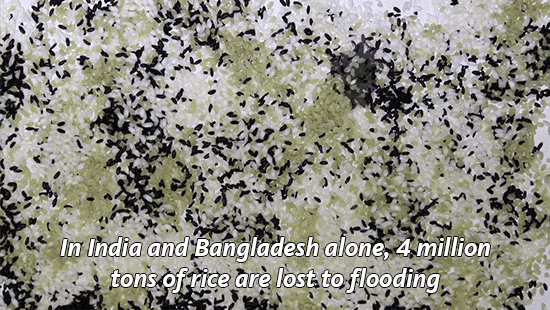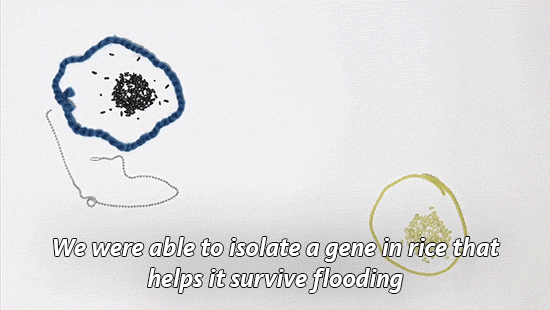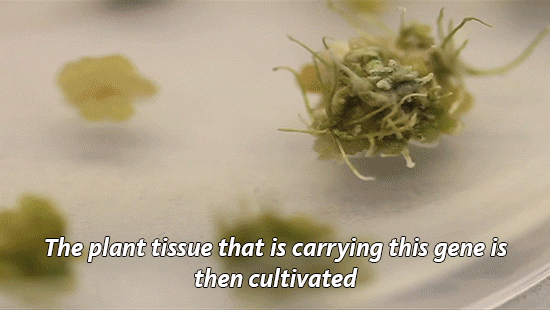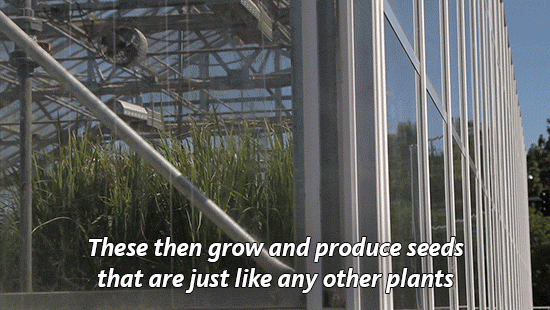I Need Some C - H - O - CO Late
I need some C - H - O - CO late

My friend just sent me this so y'all have to suffer too
More Posts from Redplanet44 and Others
Sound metal, don't you think?

Engineers 3-D print high-strength aluminum, solve ages-old welding problem using nanoparticles
HRL Laboratories has made a breakthrough in metallurgy with the announcement that researchers at the famous facility have developed a technique for successfully 3D printing high-strength aluminum alloys—including types Al7075 and Al6061—that opens the door to additive manufacturing of engineering-relevant alloys. These alloys are very desirable for aircraft and automobile parts and have been among thousands that were not amenable to additive manufacturing—3D printing—a difficulty that has been solved by the HRL researchers. An added benefit is that their method can be applied to additional alloy families such as high-strength steels and nickel-based superalloys difficult to process currently in additive manufacturing.
“We’re using a 70-year-old nucleation theory to solve a 100-year-old problem with a 21st century machine,” said Hunter Martin, who co-led the team with Brennan Yahata. Both are engineers in the HRL’s Sensors and Materials Laboratory and PhD students at University of California, Santa Barbara studying with Professor Tresa Pollock, a co-author on the study. Their paper 3D printing of high-strength aluminum alloys was published in the September 21, 2017 issue of Nature.
Additive manufacturing of metals typically begins with alloy powders that are applied in thin layers and heated with a laser or other direct heat source to melt and solidify the layers. Normally, if high-strength unweldable aluminum alloys such as Al7075 or AL6061 are used, the resulting parts suffer severe hot cracking—a condition that renders a metal part able to be pulled apart like a flaky biscuit.
Read more.
A big grab for humanity





February 17, 2010 – Astronaut Nicholas Patrick works a 5-hour, 48-minute shift outside the International Space Station. Hang on!
(NASA)

Polymer researchers discover path to sustainable and biodegradable polyesters
There’s a good chance you’ve touched something made out of the polyolefin polymer today. It’s often used in polyethylene products like plastic bags or polypropylene products like diapers.
As useful as polyolefins are in society, they continue to multiply as trash in the environment. Scientists estimate plastic bags, for example, will take centuries to degrade.
But now, researchers at Virginia Tech have synthesized a biodegradable alternative to polyolefins using a new catalyst and the polyester polymer, and this breakthrough could eventually have a profound impact on sustainability efforts.
Rong Tong, assistant professor in the Department of Chemical Engineering and affiliated faculty member of Macromolecules Innovation Institute (MII), led the team of researchers, whose findings were recently published in the journal Nature Communications.
One of the largest challenges in polymer chemistry is controlling the tacticity or the stereochemistry of the polymer. When multiplying monomer subunits into the macromolecular chain, it’s difficult for scientists to replicate a consistent arrangement of side-chain functional groups stemming off the main polymer chain. These side-chain functional groups greatly affect a polymer’s physical and chemical properties, such as melting temperature or glass-transition temperature, and regular stereochemistry leads to better properties.
Read more.


Scientists make research ‘jelly’ grow more like biological tissues
Opens up new possibilities in tissue engineering and soft robotics
Scientists from Nanyang Technological University, Singapore (NTU Singapore) and Carnegie Mellon University (CMU) have found a way to direct the growth of hydrogel, a jelly-like substance, to mimic plant or animal tissue structure and shapes.
The team’s findings, published in Proceedings of the National Academy of Sciences today, suggest new applications in areas such as tissue engineering and soft robotics where hydrogel is commonly used. The team has also filed a patent at CMU and NTU.
In nature, plant or animal tissues are formed as new biomass is added to existing structures. Their shape is the result of different parts of those tissues growing at different rates.
Mimicking this behaviour of biological tissues in nature, the research team comprising CMU scientists Changjin Huang, David Quinn, K. Jimmy Hsia and NTU President-designate Prof Subra Suresh, showed that through manipulation of oxygen concentration, one can pattern and control the growth rate of hydrogels to create the desired complex 3D shapes.
Read more.
Panorama of Jupiter

Jupiter seen by NASA’s Voyager spacecraft
Animation taken from video: Jeff Quitney
Tumour Markers
Chemical biomarkers that can be elevated by the presence of one or more types of cancer, produced directly by the tumour or by non-tumour cells as a response to the presence of a tumour. Really great tests as can use just blood/urine, but aren’t the most specific and false positives do occur.

Alpha-fetoprotein (AFP)
Glycoprotein synthesised in yolk sac, the foetal liver, and gut - will be high in a foetus and during pregnancy.
<10 ng/mL is normal for adults
>500 ng/mL could indicate liver tumour
Normally:
Produced primarily by the liver in a developing foetus
Thought to be a foetal form of albumin
suppress lymphocyte activation and antibody production in adults (immune suppressant)
Binds bilirubin, fatty acids, hormones and metals
In cancer:
Detects hepatocarcinoma (liver cancer)
Risk factors: haemochromotosis, hep B, alcoholism - cell repair and growth from this damage leads to cancers
Present in non-pathogenic liver proliferation, including the growth and repair response to the above. This makes it hard to differentiate - AFP levels can be raised in patients with liver cancer risk factors due to the factors themselves, not a cancer. Not very diagnostic!! Used in combination with other tests/factors. Sensitivity and specificity ~75%
Other hepatocellular carcinoma markers:
γGT (γ-glutamyltransferase) - biliary damage
AFP mRNA (not always together with AFP! Might not be activated)
γGT mRNA elevated
Raised cytokines (IL-8, VEGF, TGF-B1)
ALT and AST elevated - liver disease
Carcinoembryonic antigen (CEA)
a set of highly related glycoproteins involved in cell adhesion. Potentially associated with innate immune system.
Normally:
produced in gastrointestinal tissue during foetal development
production stops before birth
present only at very low levels in the blood of healthy adults.
Cancer:
Elevated in almost all patients with colorectal cancer
Can monitor recurrence of cancer (when compared to previous test results for that patient) with a sensitivity of 80% and specificity of 70%
levels may also be raised in gastric, pancreatic, lung, breast and medullary thyroid carcinomas
also some non-neoplastic (not cancer) conditions like ulcerative colitis, liver disease, pancreatitis, COPD, Crohn’s disease, hypothyroidism - again, high risk groups for colorectal cancer - not a diagnostic test
Levels elevated in smokers.
Carbohydrate antigens (CA)
Including:
CA 19-9 - Pancreas
CA 15-3 Breast
CA 50 - Colorectal
CA 125 - ovarian
Levels rise only in disease states and particularly cancer, but will not rise in all patients.
Part 2 coming soon!
Don't drink dihydrogen monoxide. Everybody dies who does!

Dihydrogen Monoxide Bottle
GMO does NOT mean Generally Mean Organizations.




Why we need GMOs to survive climate change
Genetically modified organisms get a bad rap for many reasons, but we’ve actually been genetically altering what we eat since the dawn of human history.
“For 10,000 years, we have altered the genetic makeup of our crops,”explains UC Davis plant pathology professor Pamela Ronald.
“Today virtually everything we eat is produced from seeds that we have genetically altered in one way or another.” (You can read more about Ronald’s thoughts on genetically engineered food here.)
Right now her focus is on rice. It’s one of our basic crops and without it, we would struggle to feed much of the world.
With climate change, we’re seeing an increase in flooding in places like India and Bangladesh, which makes it harder to grow this important food staple.
So Ronald and her lab have developed a flood-tolerant strain of rice. It’s known as Sub1a or “scuba rice” and millions of farmers in South Asia are now growing it in their fields.

Today is National Food Day, a day dedicated to hunger awareness. But as we focus on food insecurity, we need to talk more about how global warming will make the problem worse.
As our climate continues to heat up, it has huge impacts on what foods we are able to grow. Will our crops be able to survive droughts and floods? The University of California leads six labs that are working to develop other climate-resilient crops including chickpea, cowpea and millet.
Find out what other scientists are doing to improve our food.
So the other night during D&D, I had the sudden thoughts that:
1) Binary files are 1s and 0s
2) Knitting has knit stitches and purl stitches
You could represent binary data in knitting, as a pattern of knits and purls…
You can knit Doom.
However, after crunching some more numbers:
The compressed Doom installer binary is 2.93 MB. Assuming you are using sock weight yarn, with 7 stitches per inch, results in knitted doom being…
3322 square feet
Factoring it out…302 people, each knitting a relatively reasonable 11 square feet, could knit Doom.
-
 vagaland liked this · 10 months ago
vagaland liked this · 10 months ago -
 mmmudlark liked this · 1 year ago
mmmudlark liked this · 1 year ago -
 honeyteethh liked this · 1 year ago
honeyteethh liked this · 1 year ago -
 flowersfallingdown liked this · 1 year ago
flowersfallingdown liked this · 1 year ago -
 sprite-and-tranxiety reblogged this · 1 year ago
sprite-and-tranxiety reblogged this · 1 year ago -
 sprite-and-tranxiety liked this · 1 year ago
sprite-and-tranxiety liked this · 1 year ago -
 sjgill3 liked this · 1 year ago
sjgill3 liked this · 1 year ago -
 sunkissedempire liked this · 2 years ago
sunkissedempire liked this · 2 years ago -
 imdaqueenie reblogged this · 2 years ago
imdaqueenie reblogged this · 2 years ago -
 pawsitivelymiraculous liked this · 2 years ago
pawsitivelymiraculous liked this · 2 years ago -
 mommaziza liked this · 2 years ago
mommaziza liked this · 2 years ago -
 ciao-anyway-so liked this · 2 years ago
ciao-anyway-so liked this · 2 years ago -
 fluffedupfox liked this · 2 years ago
fluffedupfox liked this · 2 years ago -
 lil-tumbles liked this · 2 years ago
lil-tumbles liked this · 2 years ago -
 crimsonfeatheredraven reblogged this · 2 years ago
crimsonfeatheredraven reblogged this · 2 years ago -
 surfpunch liked this · 2 years ago
surfpunch liked this · 2 years ago -
 void-of-erebos reblogged this · 2 years ago
void-of-erebos reblogged this · 2 years ago -
 void-of-erebos liked this · 2 years ago
void-of-erebos liked this · 2 years ago -
 disclaimer-performatico reblogged this · 2 years ago
disclaimer-performatico reblogged this · 2 years ago -
 disclaimer-performatico liked this · 2 years ago
disclaimer-performatico liked this · 2 years ago -
 widdendream5 liked this · 2 years ago
widdendream5 liked this · 2 years ago -
 sharpartisan reblogged this · 2 years ago
sharpartisan reblogged this · 2 years ago -
 sharpartisan liked this · 2 years ago
sharpartisan liked this · 2 years ago -
 bipixelsnail reblogged this · 2 years ago
bipixelsnail reblogged this · 2 years ago -
 mx-poth reblogged this · 2 years ago
mx-poth reblogged this · 2 years ago -
 mx-poth liked this · 2 years ago
mx-poth liked this · 2 years ago -
 strawberry-lemonade reblogged this · 2 years ago
strawberry-lemonade reblogged this · 2 years ago -
 strawberry-lemonade liked this · 2 years ago
strawberry-lemonade liked this · 2 years ago -
 justanotherweirdo277 liked this · 2 years ago
justanotherweirdo277 liked this · 2 years ago -
 analviel liked this · 2 years ago
analviel liked this · 2 years ago -
 phis-corner reblogged this · 2 years ago
phis-corner reblogged this · 2 years ago -
 phionph liked this · 2 years ago
phionph liked this · 2 years ago -
 magicalroadtripretroapricot reblogged this · 2 years ago
magicalroadtripretroapricot reblogged this · 2 years ago -
 bluedinosaurglitter reblogged this · 2 years ago
bluedinosaurglitter reblogged this · 2 years ago -
 incorrectanni liked this · 3 years ago
incorrectanni liked this · 3 years ago -
 mo-s-k14142 liked this · 3 years ago
mo-s-k14142 liked this · 3 years ago -
 tannu29 liked this · 3 years ago
tannu29 liked this · 3 years ago -
 soaringhawk159 reblogged this · 3 years ago
soaringhawk159 reblogged this · 3 years ago -
 pakaloloblowin-blog liked this · 4 years ago
pakaloloblowin-blog liked this · 4 years ago -
 bastiaan-deactivated20190305 reblogged this · 4 years ago
bastiaan-deactivated20190305 reblogged this · 4 years ago -
 bastiaan-deactivated20190305 liked this · 4 years ago
bastiaan-deactivated20190305 liked this · 4 years ago -
 squidiosyncrasies reblogged this · 4 years ago
squidiosyncrasies reblogged this · 4 years ago